Prices have been brought up to date, and are for stamps in 'average' condition. The currency is now selectable, the default is British Currency (£). I have revised Hiscocks' original listing, though leaving references to the original designations. The new designations have 'RH' numbers (Revised Hiscocks) to avoid confusion. Setup |
| Shortcuts to different sections | ||||||||||||
| Scarcity | Value varieties | Examples | Remainders | tête-bêche / blocks | Flaws & varieties | Used ? | Stationery | Evidence | Research | Plating-Group-1 | Plating-Group-2 | Plating-Group-3 |
Steve Hiscocks wrote:
This company was initially set up as the Magnetic Telegraph Co. in 1851 and changed to be the above name in June 1852. In 1857 it merged with the British
Telegraph Co (q.v.) to form the British and Irish Magnetic Telegraph Co. Ltd. (q.v.). Edward B. Bright, secretary of the 'English and Irish' became secretary
and general manager of the 'British and Irish' and his signature thus appears on the stamps of both. The single set of stamps was lithographed
by Mawdesley & Co of 2, Castle Street, Liverpool in sheets of 50 or 100. In the latter case one pane of 50 was printed tête bêche below the other and tête bêche
vertical pairs are thus found. All values derive from the same pattern with the actual values inserted by hand and thus differing slightly from stamp to stamp.
The '1' on the 1s 6d value has an exaggerated serif and is sometimes mistaken for a '7'. Control numbers were stamped somewhat inaccurately by hand.
The vertical spacing of the stamps in the sheet was very close and top and bottom margins are very small or absent. Stamps without controls are
remainders and sell for rather less except where they have large margins top and bottom in which case they are probably proofs.
My notes:
Tête bêche vertical pairs are only known for remainders of the 1/- value. There is no evidence that they ever existed for any of the other values.
The yellow highlighted section is a complete myth. They were not printed close together vertically! Suffice to say, that although about 90% of serialised stamps
are cut into at top, bottom or both, no serialised examples are known showing parts of the stamps above or below. Instead it was the result of deliberate trimming.
I have four more pages on the 'English and Irish'. The conclusions are very interesting.
Though there may indeed be some proofs in existence, the vast majority of stamps without serial numbers are remainders.
My blocks of four and tête bêche pairs have full gum, as do virtually all of the rest. In my experience, proofs do not normally have gum.
Head Office at 2, Exchange Buildings, Liverpool. London Offices 72 Old Broad Street, City; Stock Exchange, Hercules Passage and
7 Charing Cross (opposite the statue). The company also operated in Ireland and Scotland.
I am not sure when these stamps were produced, L&H agree with Hiscocks that they were printed by Mawdesley & Co. of Liverpool
but while Hiscocks says in 1853 (echoing Philbrick & Westoby (1881), which would make them about the first), and
LINN's Stamp News thinks so too,
L&H say "1857(?)" (presumably quoting Raymond Lister). Raymond Lister did say 1857, but he also
points out that this company became the British and Irish Magnetic Company on 22nd. April 1857. He had also never seen any used examples.
The only used example I have seen for The English & Irish Company is a 4s example numbered 40889. That is a lot to get through in 4 months.
Steven Roberts on the Distant Writing website estimates 1854 or 1855.
L&H say that they are "not thought to have been used although an example of the 2s6d (C04341) is known with an apparent cancellation".
I have not seen an image of C04341, but C04342 and C04344 are not used. I do though have a 4/- numbered 40889 (no letter)
which appears to be telegraphically used. There are also, confusingly, at least three remainders with 1956 postal cancels.
These can have control numbers in black, which can be about 3.5mm or 4mm high.
The control numbers are prefixed by a letter that corresponds to the face value of the stamp.
A = 1s, B = 1s6d, C = 2s6d, D = 4s, G = 5s. The jump from 'D' to 'G' is interesting.
The 4/- is also known with control number 40889. The highest number by far, but no letter (the only used one known).
My initial rough calculations suggested that the indicated numbers of stamps were only about enough for a year's supply,
suggesting 1856 as being the earliest possible. Unless the stamps were only in use at a few of the offices.
The discovery of the 4/- numbered 40889 with no letter opens up whole new possibilities though.
How long would it have taken to use up forty thousand 4/- stamps ?
What did the numbers get up to before they needed letters ?
Imperf, Black controls or no controls.
All are without control unless otherwise stated.
The varieties (except tête-bêche) probably all exist with control numbers. Morley said they are worth about 50% more.
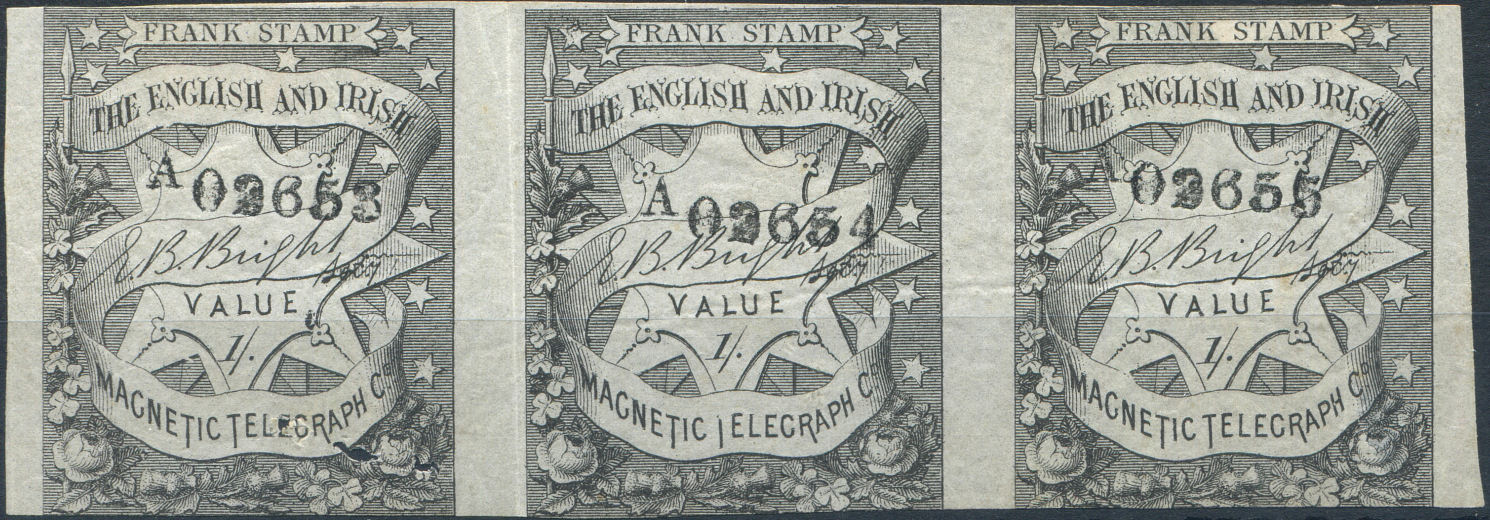 |
| Three of 1s Hiscocks H1 showing numbering and margins. A02653 to A02655 has an example of the famous | for T flaw at A02654 in the middle, RH1a. Images courtesy of Steve Lawrie. |
| RH # | Hisc. | Description | Rarity | Mint | Used |
|---|---|---|---|---|---|
| RH1 | H1 | 1s black with control. | R2 | 45.00 | - |
| RH1a | WM | 1s black, with control error '|ELEGRAPH' | Unlisted | 130.00 | - |
| RH1b | WM | 1s black, without control | Scarce | 20.00 | - |
| RH1c | H1a | 1s black, without control Tête-bêche vertical pair | Unlisted | 250.00 | - |
| RH1d | SP | 1s black, without control Block of 4 | Unlisted | 100.00 | - |
| RH1e | WM | 1s black, without control error '|ELEGRAPH' | Unlisted | 60.00 | - |
| RH2 | H2 | 1s6d mauve with control. | R2 | 30.00 | - |
| RH2a | WM | 1s6d mauve, without control | Scarce | 15.00 | - |
| RH2b | SP | 1s6d mauve, without control Block of 4 | Unlisted | 75.00 | - |
| RH3 | H3 | 2s6d blue with control. | R2 | 30.00 | - |
| RH3a | L&H | 2s6d blue, with control error '|ELEGRAPH' | Unlisted | 80.00 | - |
| RH3b | WM | 2s6d blue, without control | Scarce | 15.00 | - |
| RH3c | SP | 2s6d blue, without control Block of 4 | Unlisted | 75.00 | - |
| RH3d | WM | 2s6d blue, without control error '|ELEGRAPH' | Unlisted | 40.00 | - |
| RH4 | H4 | 4s red with control. | R3 | 80.00 | - |
| *RH4a | SP | 4s red with control number, but no letter. | Unlisted | 100.00 | 100.00 |
| RH4b | WM | 4s red, without control | Scarce | 40.00 | - |
| RH4c | SP | 4s red, without control Block of 4 | Unlisted | 200.00 | - |
| RH5 | H5 | 5s green with control. | R2 | 60.00 | - |
| RH5a | SP | 5s green, with control error '|ELEGRAPH' | Unlisted | 160.00 | - |
| RH5b | WM | 5s green, without control | Scarce | 30.00 | - |
| RH5c | SP | 5s green, without control Block of 4 | Unlisted | 150.00 | - |
| RH5d | WM | 5s green, without control error '|ELEGRAPH' | Unlisted | 80.00 | - |
Look here for an explanation of the table.
* I have added this, see Used ? below.
In the 'Hisc.' column, 'WM' indicates that it was catalogued by Walter Morley and 'SP' means that I added it.
Perhaps a better idea of scarcity of the stamps with control numbers can be gained from this table of the ones I have scans of.
| Denomination | Qty stamps | Largest multiple | Lowest control | Highest Control | Sheet numbers represented | *Qty TB | *Blk-4 | *Qty rem |
|---|---|---|---|---|---|---|---|---|
| 1/- | 47 | 3 | A02619 | A02900 | 26, 27, 28. | 9 | 2 | 31 |
| 1/6d | 93 | 9 | B02516 | B05779 | 25, 26, 27, 28, 55, 56, 57. | 0 | 2 | 33 |
| 2/6d | 78 | 9 | C02116 | C04499 | 21, 22, 40, 41, 42, 43, 44. | 0 | 0 | 33 |
| 4/- | 25 | 5 | 40889, D12373 | D12491 | 408, D123, D124. | 0 | 0 | 26 |
| 5/- | 34 | 2 | G01570 | G01873 | 15, 16, 17, 18. | 0 | 0 | 16 |
Surprisingly, with control numbers, the 1/- stamps are nearly as scarce as the 5/- though many of the 1/6d and 2/6d are in the form of long strips.
* The last three columns are the tête-bêche pairs (including 2 now known to be in the Royal Collection) and remainder blocks of four and singles quantities.
This last is an estimate based on the ratios in two collections for which I have complete data.
L&H refer to a 1/6d with control B02322 having 4mm high control figures. This is lower than any I have seen.
Morley suggested that control letters 'E' and 'F' were reserved for more of the 4/- and 5/- values respectively.
I suggest that they were both reserved for the 4/- values, as the control numbers run much higher for the 4/- and there is plenty of alphabet left after 'G' anyway !
It should be noted that there is a used 4/- stamp numbered 40889 with no letter.
Since the values were entered by hand onto the plate, there is some variability in size, style and position.
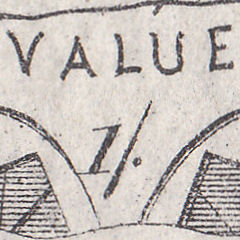 |
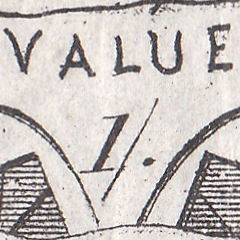 |
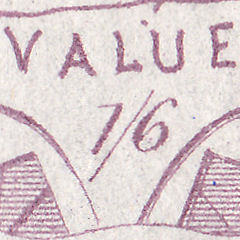 |
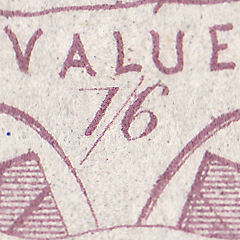 |
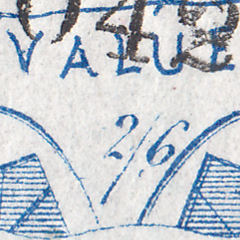 |
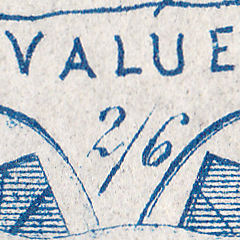 |
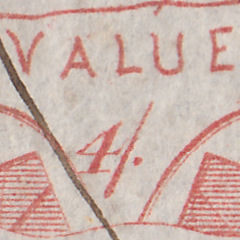 |
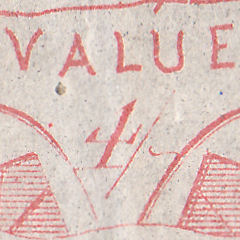 |
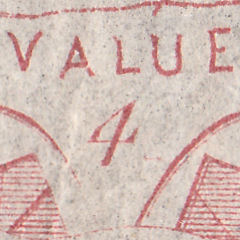 |
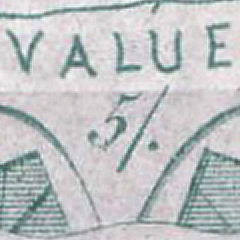 |
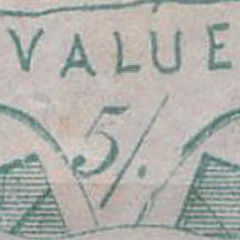 |
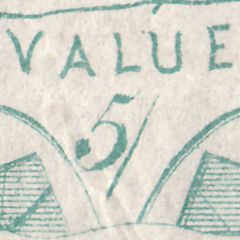 |
The 1/6 has sometimes been read as 7/6. Perhaps that is partly because it lacks a bottom 'foot' like on the 1/- and most 4/-.
However, some very few 1/6 stamps do have a foot. This is from B05751, and there is a slightly less clear one on B05581.
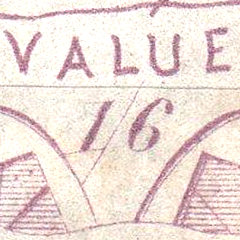
Interestingly, the sizes of these stamps are not all the same!
| value | width (mm) | height (mm) |
|---|---|---|
| 1s | 35 | 43.2 |
| 1s6d | 35.3 | 44 |
| 2s6d | 35 | 43 |
| 4s | 36 | 44 |
| 5s | 35.25 | 43.5 |
There appears to be some variation between stamps of the same value also.
Try measuring the heights of the two in the Tête-bêche vertical pair shown lower down with a ruler.
I make it about 1.4% difference.
| Images: courtesy of Grosvenor Auctions. | |
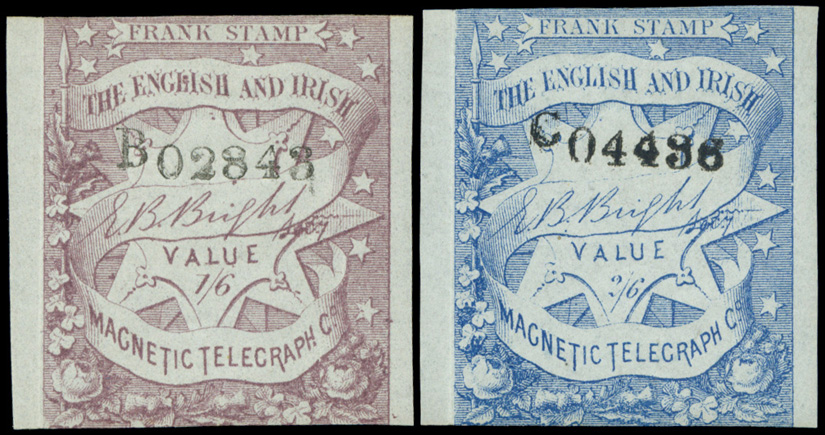 | |
| 1s6d. Hiscocks H2 | 2s6d. Hiscocks H3 |
 | |
| Strip of 6 x 1s6d Hiscocks H2 showing numbering and margins. The value was inserted by hand and varies. | |
Here are two strips of 9 courtesy of Steve Lawrie.
The images are split in two for ease of display, but the actual strips are each in one piece.




| Images courtesy of Mark Gibson. | |
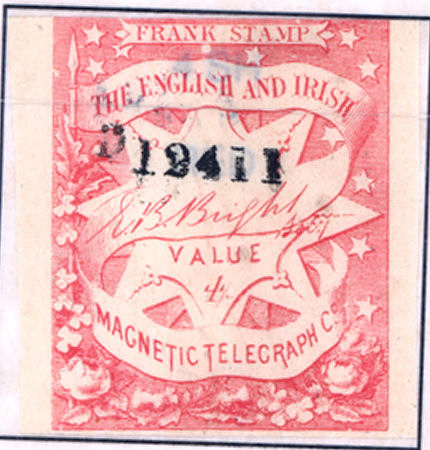 |
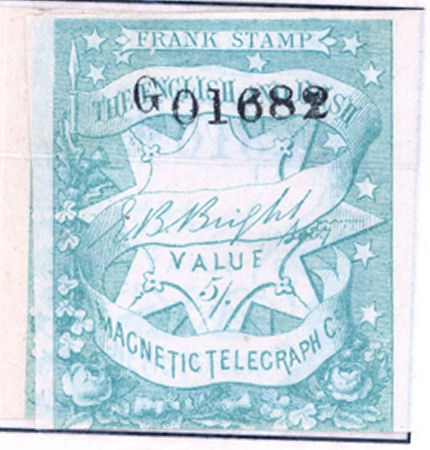 |
| 4s. Hiscocks H4 | 5s. Hiscocks H5 |
A pair of the 5/- also courtesy of Steve Lawrie.
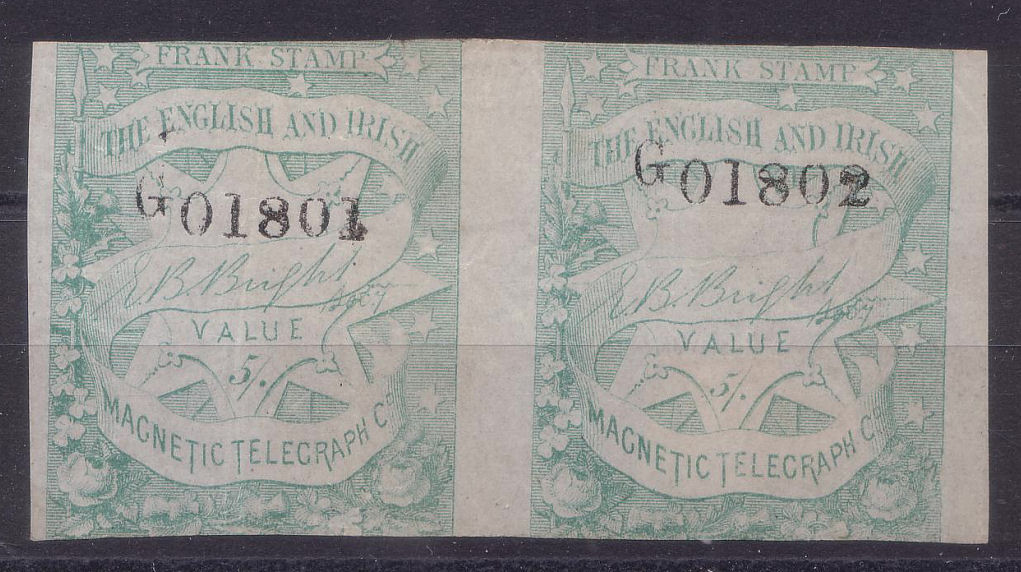
These exist without control numbers and with broad margins top and bottom.
These were at one time thought to be proofs, and that the ones with controls shown above were from sheets with rows closely spaced.
I contend that this was not the case.
They were in fact all printed on the same sheets, but had the control numbers added and rows trimmed
to a standard height (about 1¾ inches) before use, probably to fit a dispenser of some kind, as there is
evidence the strips were joined to make (the first ?) coil stamps.
The ones without controls were thus remainders.
Gum: It is also worth mentioning that even my Shilling blocks of 4 and tête-bêche pairs have gum, proofs generally do not.
This does not mean that there are no proofs however, The Totton 2/6 example is a rather light shade and may be, but I think the majority of those without serial numbers are remainders.
For anyone interested, I present the evidence on a separate page.
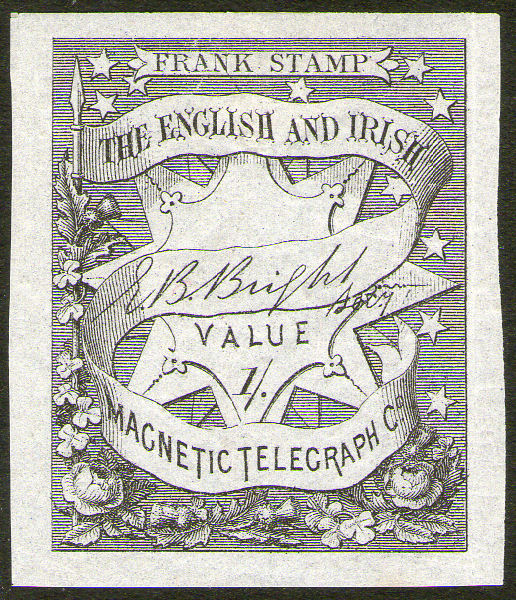 |
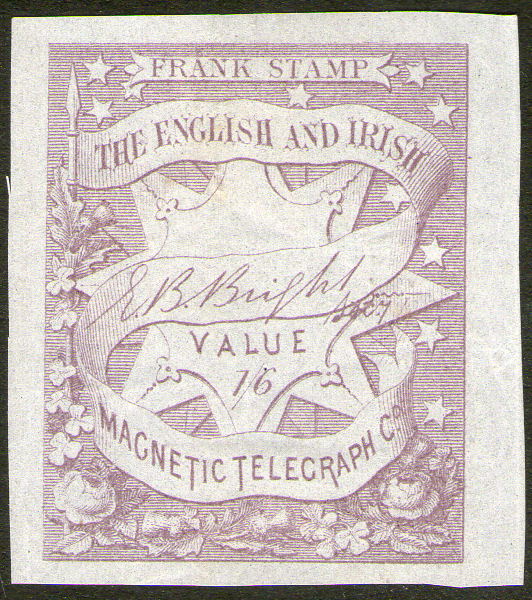 |
| 1s. no control - 'remainder' of H1. | 1s6d. no control - 'remainder'of H2. |
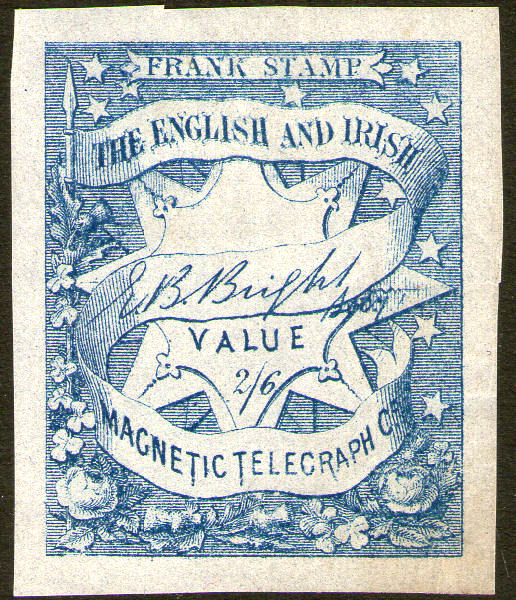 |
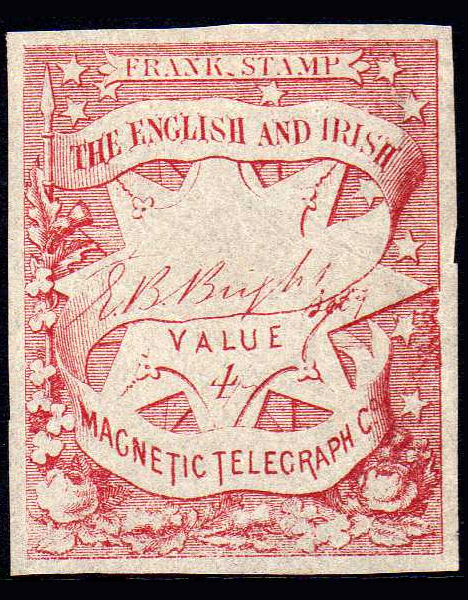 |
| 2s6d. no control - 'remainder' of H3. | 4s. no control - 'remainder' of H4 (Source: Andrew Higson). |
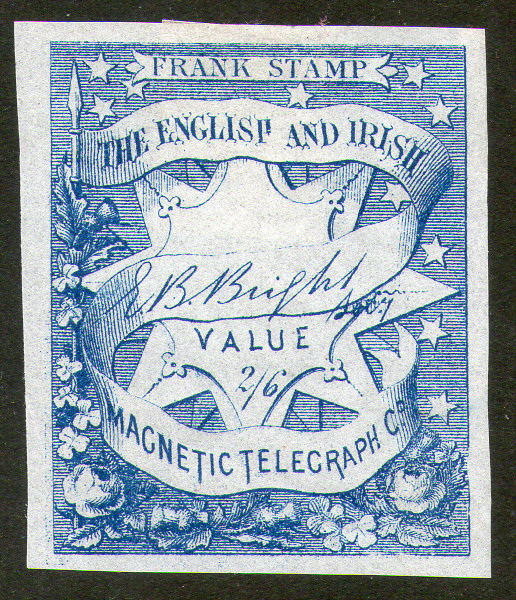 |
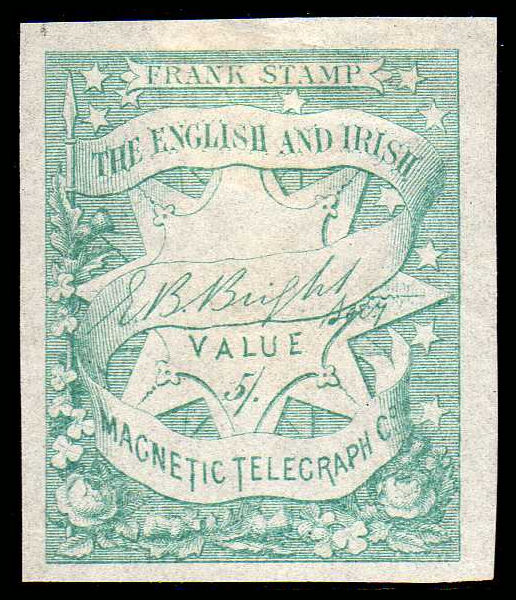 |
| 2s6d. broken 'H' in 'ENGLISH' - 'remainder' of H3. | 5s. no control - 'remainder' of H5 (Source: Andrew Higson). |
Vertical pairs or blocks of these are very scarce, even without controls. Note the variability of the sizes of these stamps, try measuring with a ruler.
| Images courtesy of Steve Lawrie. | |
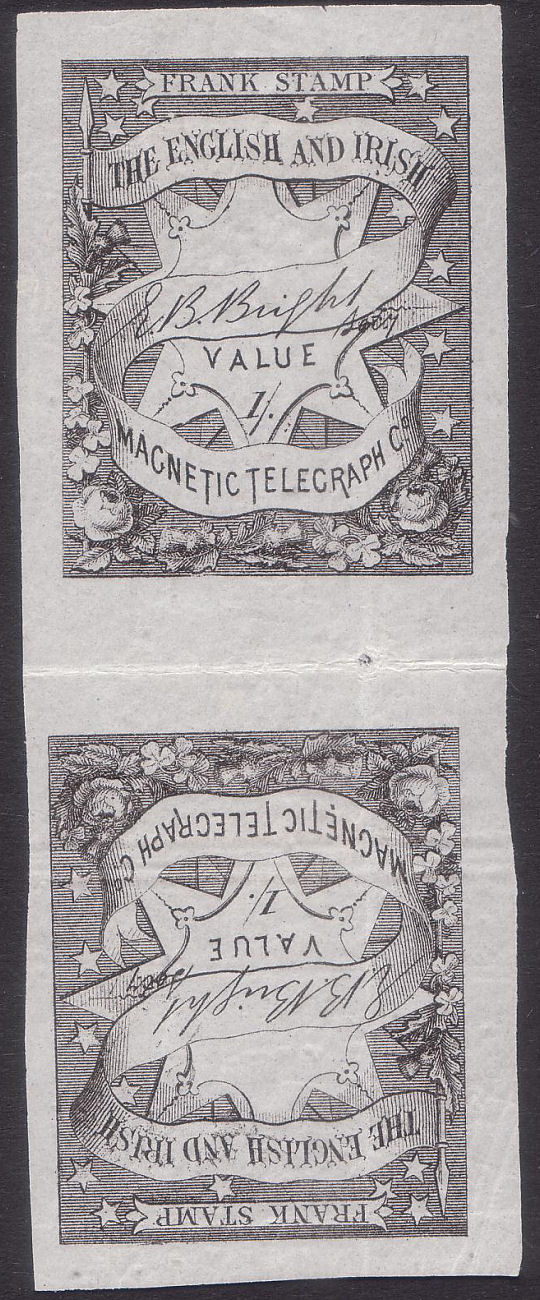 |
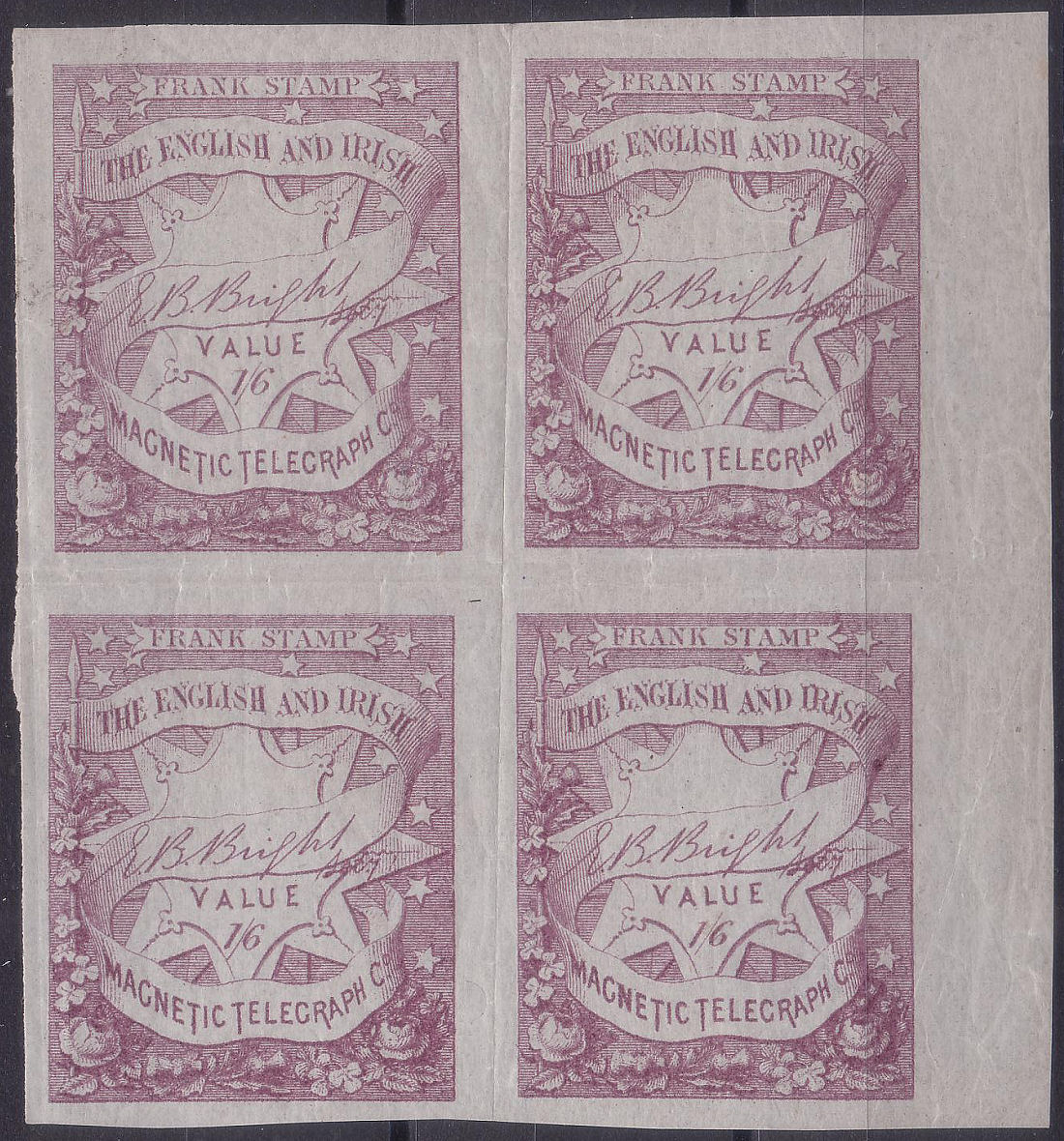 |
| 1s. no control tête-bêche pair | 1s6d. no control block of 4 |
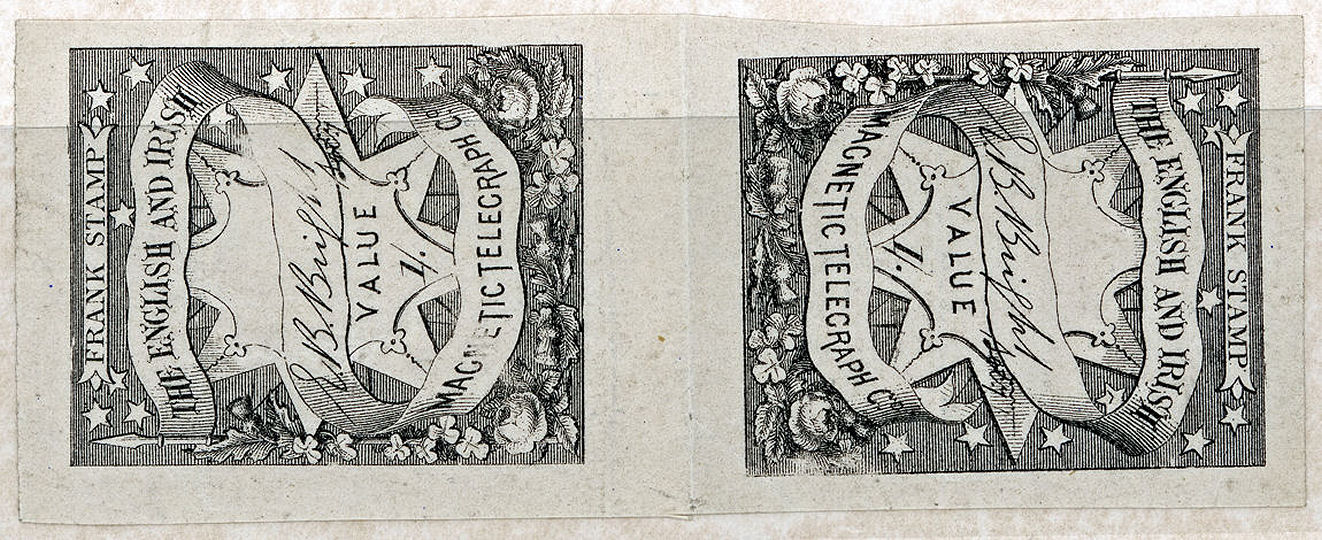 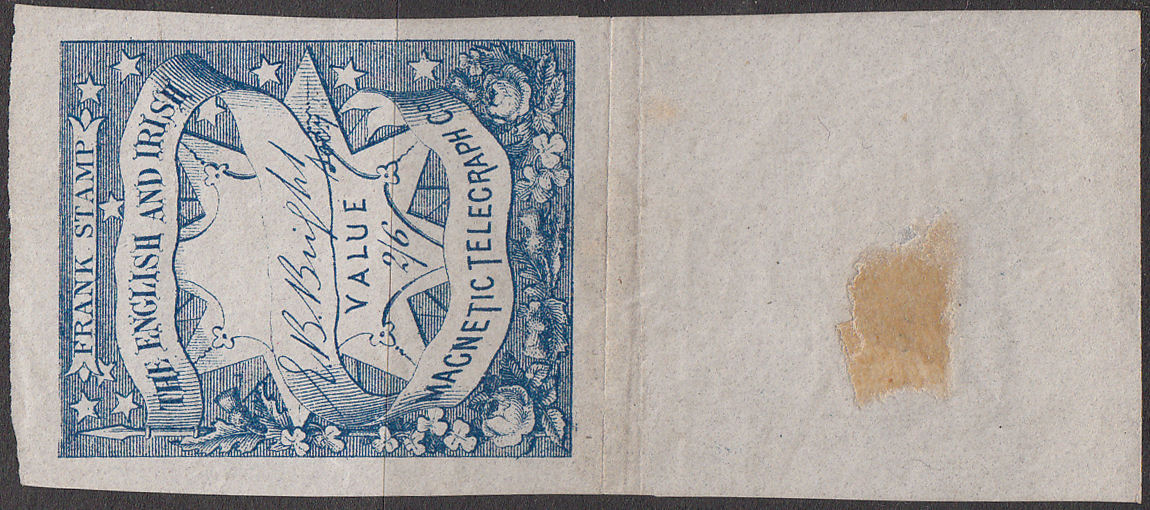 -----------------------------
-----------------------------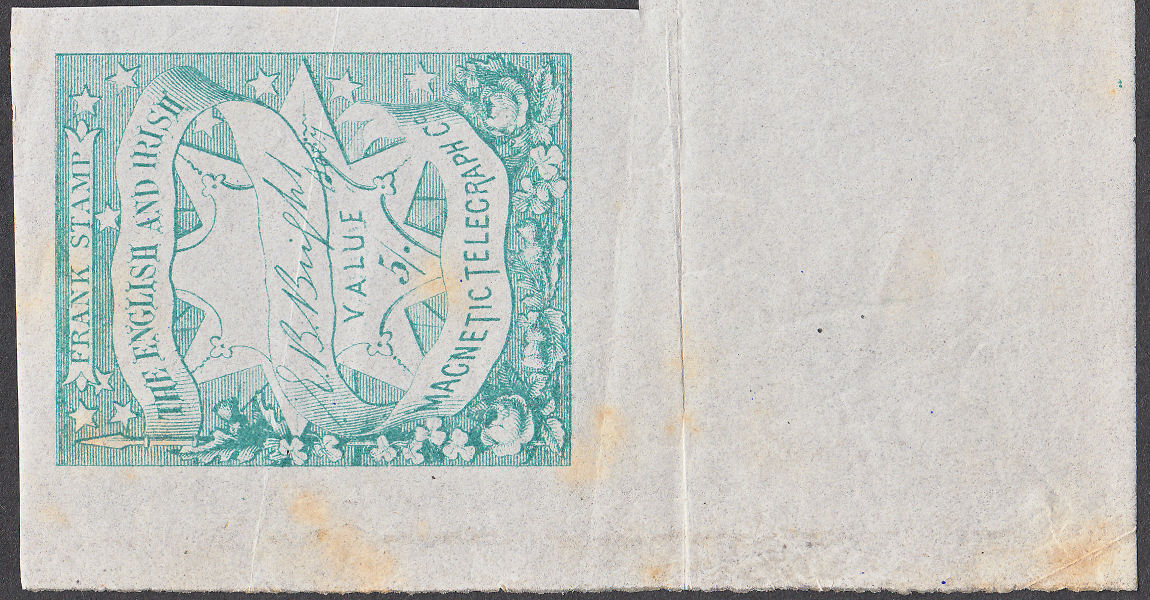 -----------------------------
-----------------------------
|
| At the top is a 1s. no control tête-bêche pair H1a (Image courtesy of Dr Mark Gibson). Below that is a 2/6 (courtesy of Martien Blank) from the bottom of the sheet. Note the large margin, about 48mm. At the bottom is a 5/- of mine from the bottom-left of the sheet. Note the large margins again. These cannot be from a sheet printed in the same format as the 1s above. |
Langmead and Huggins mention a flaw seen on the 2s6d value where the 'T' of 'TELEGRAPH' is missing the crossbar.
They say it is constant and occurs only once in the sheet, so presumably they have seen more than one, and quote C04384 as being the serial on one.
I have it on C04144 and have seen it on C04434 as well as a 1/- remainder. After having worked out the plating on the stamps of Bonelli and London District, this strange pattern forced me to analyze these.
I now know that there is one per pane of 50 of the 2/6 and probably the 5/-, but probably only one per sheet of 100 of the 1/-. There are many other flaws sharing this pattern.
Pages 55-57 of the Telegraph Stamps of the World, self-published by Walter Morley in February 1900 lists a number of varieties of these.
These varieties were glossed over in Raymond Listers' book of 1961 and disappeared with the exception of some misconceptions in Hiscocks' book.
The misconceptions involve the tête-bêche pairs, and are almost certainly due to the rather ambiguous and fragmentary writings of Morley.
Stanley Gibbons (1899) say that some sheets had 50 stamps and some 100, and that the sheets of 100 had two panes of 50 inverted relative to each other creating tête-bêche pairs in the middle.
Walter Morley writing in "The Fiscal Philatelist" March 1893 said "I have before me what is probably an entire sheet - 100 stamps - formed by 10 rows of 10,
measuring 16½ x 19 5/8 inches from outer edge to outer edge of the stamps, the distance between each stamp being ¼ inch."
He was talking about stamps without controls. Unfortunately he did not trouble to say what denomination stamps these were.
In his 1900 catalogue he lists:
1/- black (50 types to sheet)
1/6 lilac (100 types to sheet)
2/6 blue (100 types to sheet)
4/- pale red (50 types to sheet)
5/- green (100 types to sheet)
His use of the word 'types' begs explanation. My interpretation would be that all sheets from the printer had 100 stamps.
Some were 100 slightly different stamps, since the values were inserted into the plate by hand.
Some were 50 slightly different stamps, plus another of the same 50 printed upside down, with the intention of guillotining down the centre to make two sheets of 50. slightly different stamps
That would imply only the 1/- and 4/- could exist as tête-bêche pairs. His catalogue in fact only lists the 1/- as tête-bêche pairs, and then only without controls.
I will put the facts straight as (implied) by Walter Morley and drop 2a, 3a and 5a from Hiscocks' listing.
I will also make it clear that H1a and H4a refer to examples without control.
The variety mentioned by L & H above is listed by Morley for the 1/-, 2/6d and 5/- values, but only without controls. The 2/6d with control of L&H (C04384) is new.
I have only seen three examples. The first was this poor scan of a 1s without control, but then Steve Lawrie's example on the 2/6d with control C04434 (50 stamps after C04384),
and more recently I bought C04144 and have seen A02654, both shown below.
The last one adds complications which required a re-think to resolve.
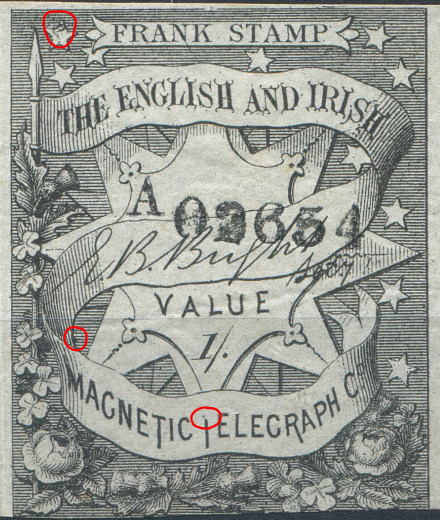
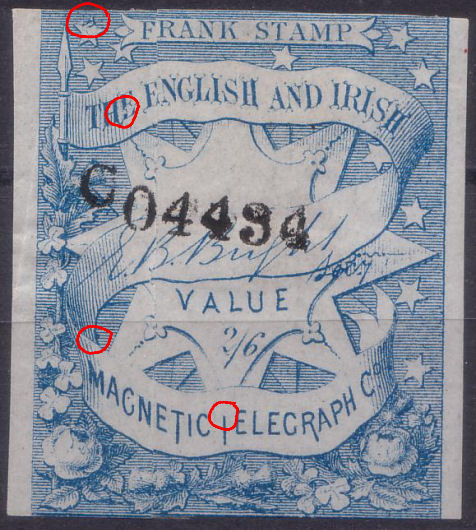
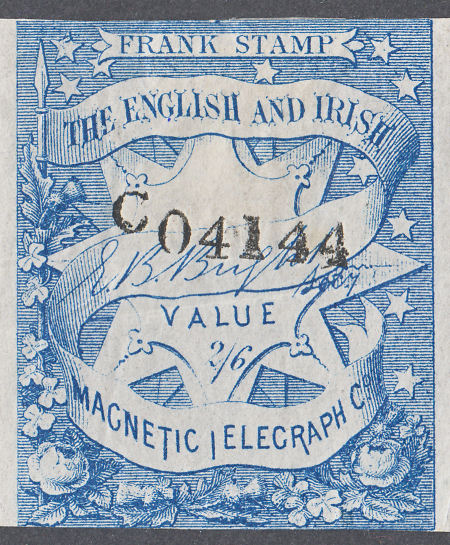
I thought at first that it was likely on all 2/6d stamps with numbers ending with 34 or 84, but the penultimate digit is variable.
It should exist on the 1/-, 2/6d and 5/- values only as Morley catalogued them, it is not on these two however:
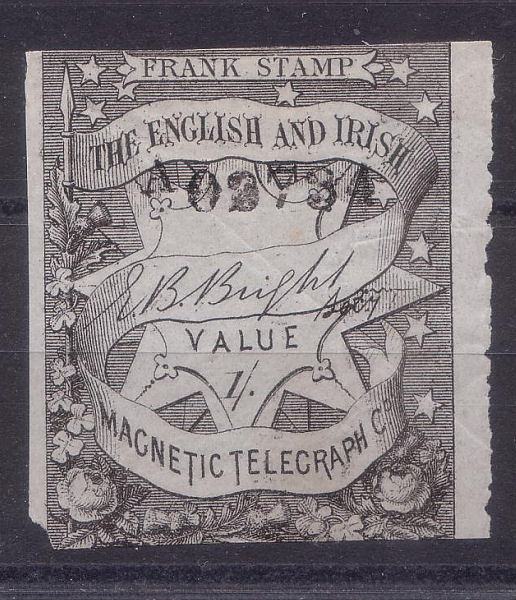
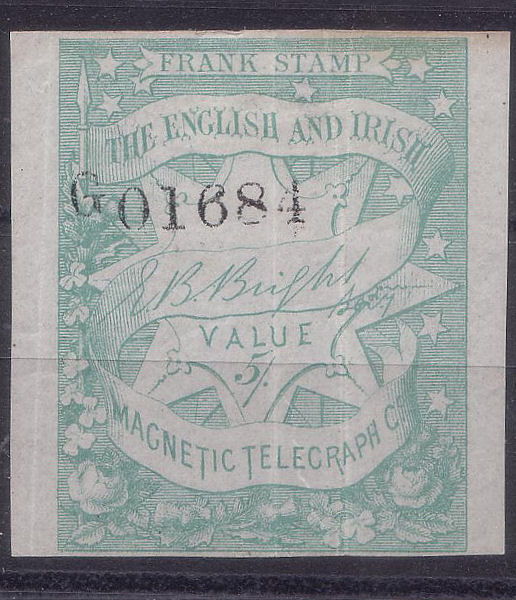
Courtesy of Steve Lawrie.
An error listed by Morley for the 2/6d is described as 'double printed'. I have not seen any that look like they have truly been through the press twice,
but I have seen quite a few that appear to have had a 'double touch' with the plate.
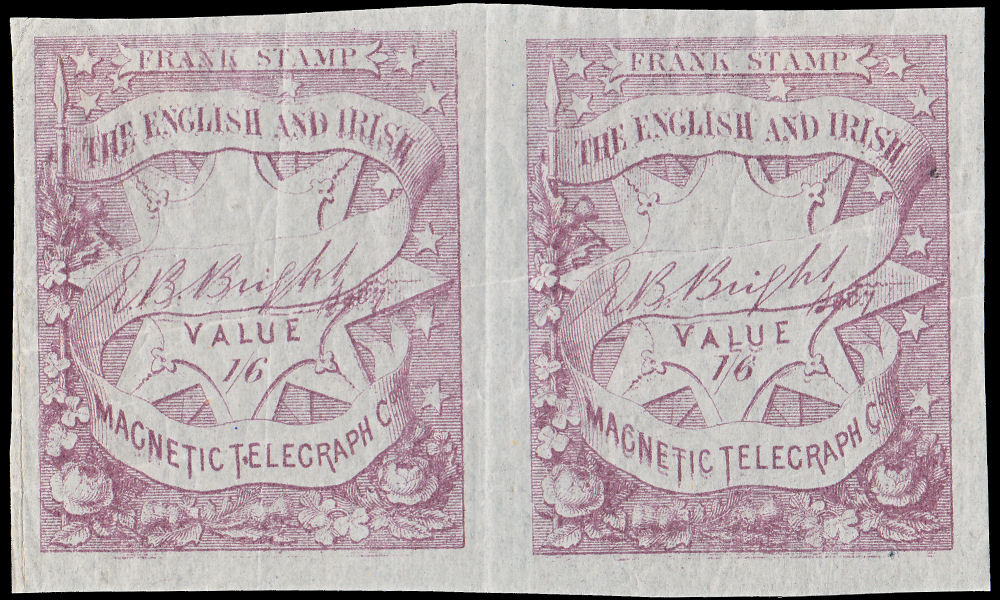
Perhaps due to a turbulent air-flow or bad handling, portions of some stamps appear to be doubled.
Another important flaw is this one:
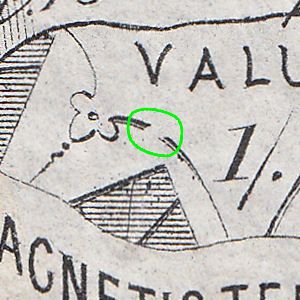
It is present on about a quarter of stamps with controls ending with '5' on the 1/-, 2/6 and 5/- values.
I call it the '5' flaw (there are others, but this is the most notable).
For anyone interested, my tentative attempt at plating can be seen here.
Here are some interesting stamps:
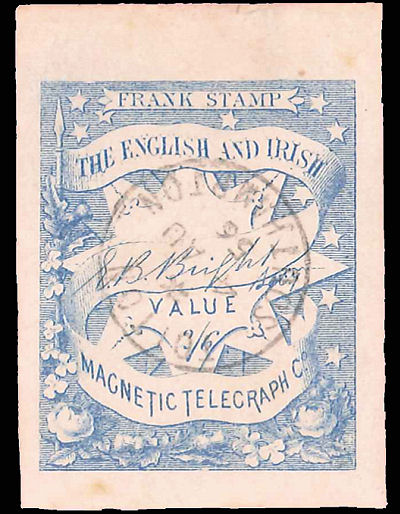 |
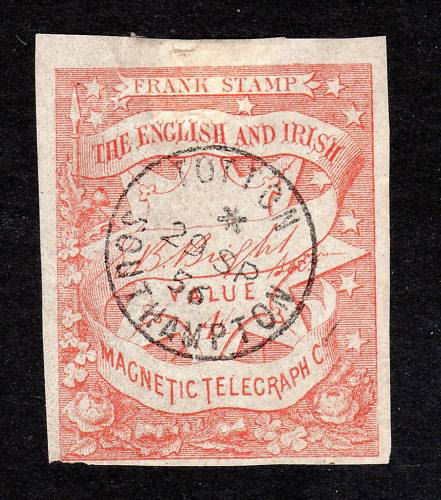 |
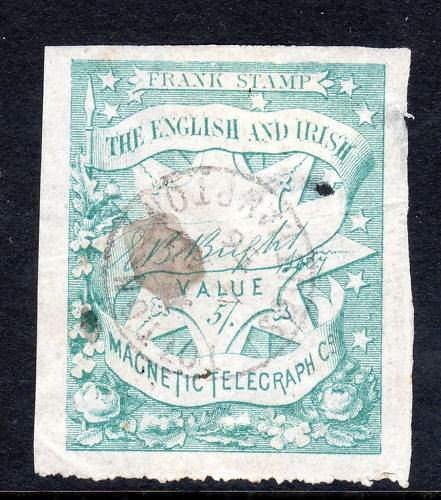 |
| 2/6d in a rather pale shade of blue - 4 AU 56 (from top row, column 4, pane 1) |
4/- - 29 SP 56 | 5/- - 4 AU 56 |
| Image courtesy of Mark Talbot. | I do not know where these are now, I would like to hear from the owner/s. | |
These appear to be used at Totton, Southampton in '56. They have no control numbers.
There are also 3d, 9d and 1/- Bonelli's Telegraph stamps together with an LDTC 6d Telegraph stamp with similar Totton postmarks,
one of which still has full gum, so was presumably cancelled by favour. I do not know if these three still have gum.
These are presumably postal cancellations of 1956.
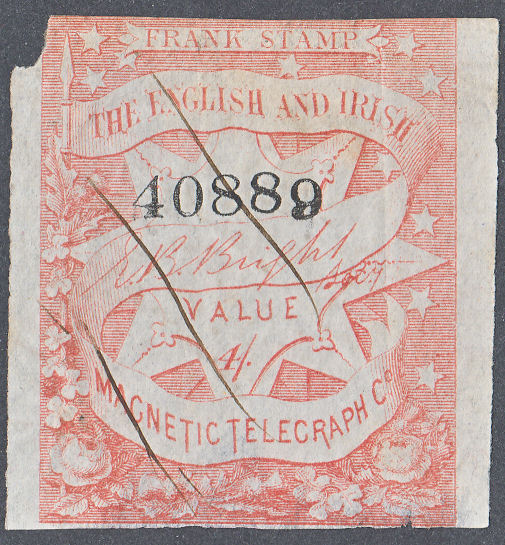
This seems to be genuinely used, it has no gum, and is thinned at the bottom on the back.
If, like most telegraph operations, these were attached to forms that were subsequently securely destroyed, the damage could be due to rapid surreptitious removal.
It is the highest number I have seen but has no control letter ! A rare survivor from the time before lettering.
It may be that the 4/- was the first to be used and control letters added only later when there were more values.
There are characteristic flaws common to the 1/-, 2/6 and 5/- suggesting they were made 'as a batch'.
The 4/- is different to these and also to the 1/6 which I suspect was made last, due to the relatively few flaws and uniform nature of the face value.
Another interesting feature of 40889 is that the control is much more accurately placed than most of the others.
One last thing, see the notch out of the top-left corner! There is a good reason for it that relates to why these were all trimmed to a maximum height of about 1 2/3 inches.
Received Message form of 31/10/53 - courtesy of Steve Lawrie. This is the one described by L & H as their #1. Size 203 x 291 mm. - My Ref. EIM-R-1853-1
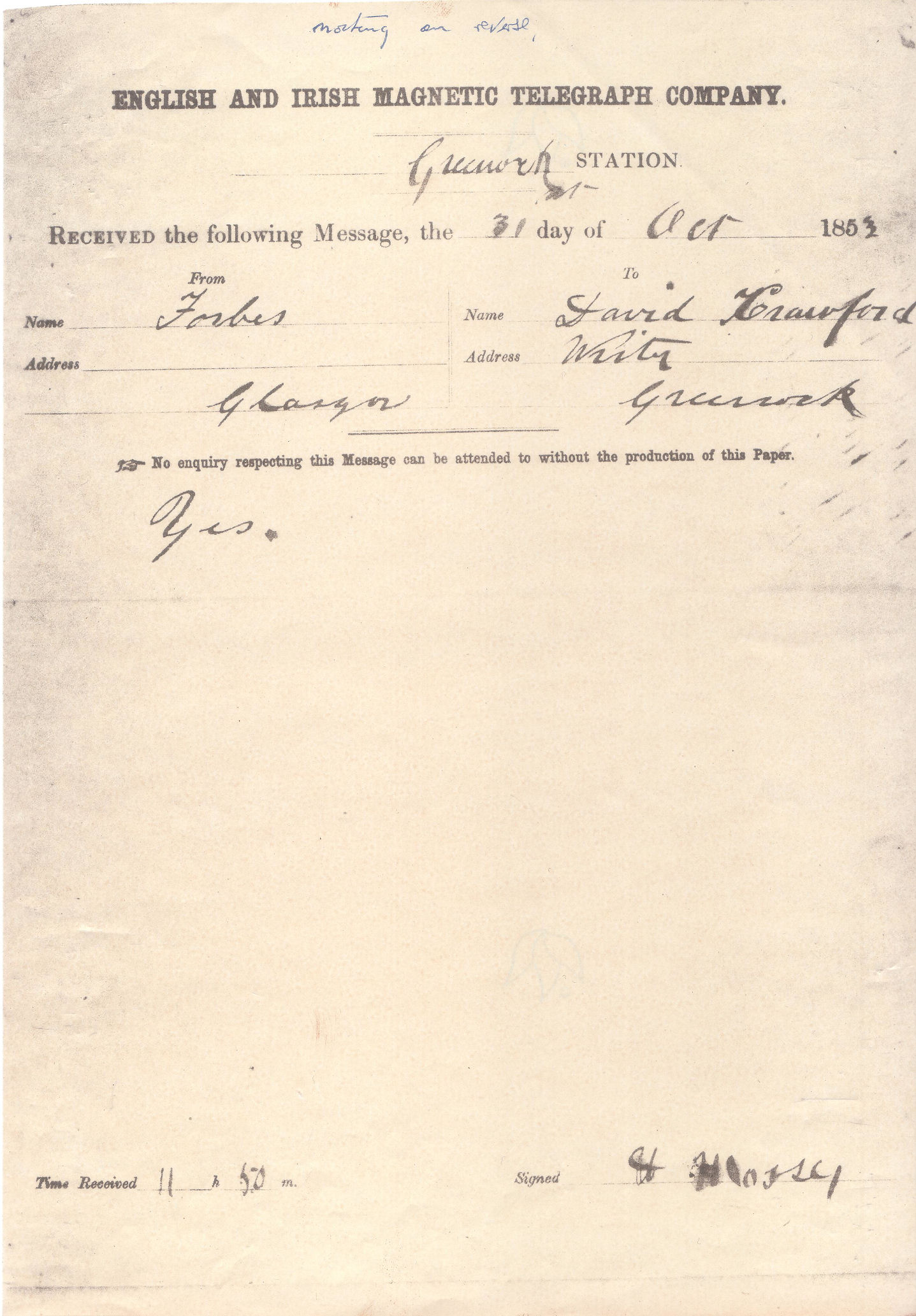
Received Message form of 1/3/54 for London (front and back) - courtesy of Steve Lawrie. This is the one described by L & H as their #2. Size 172 x 220 mm. - My Ref. EIM-R-1854-1
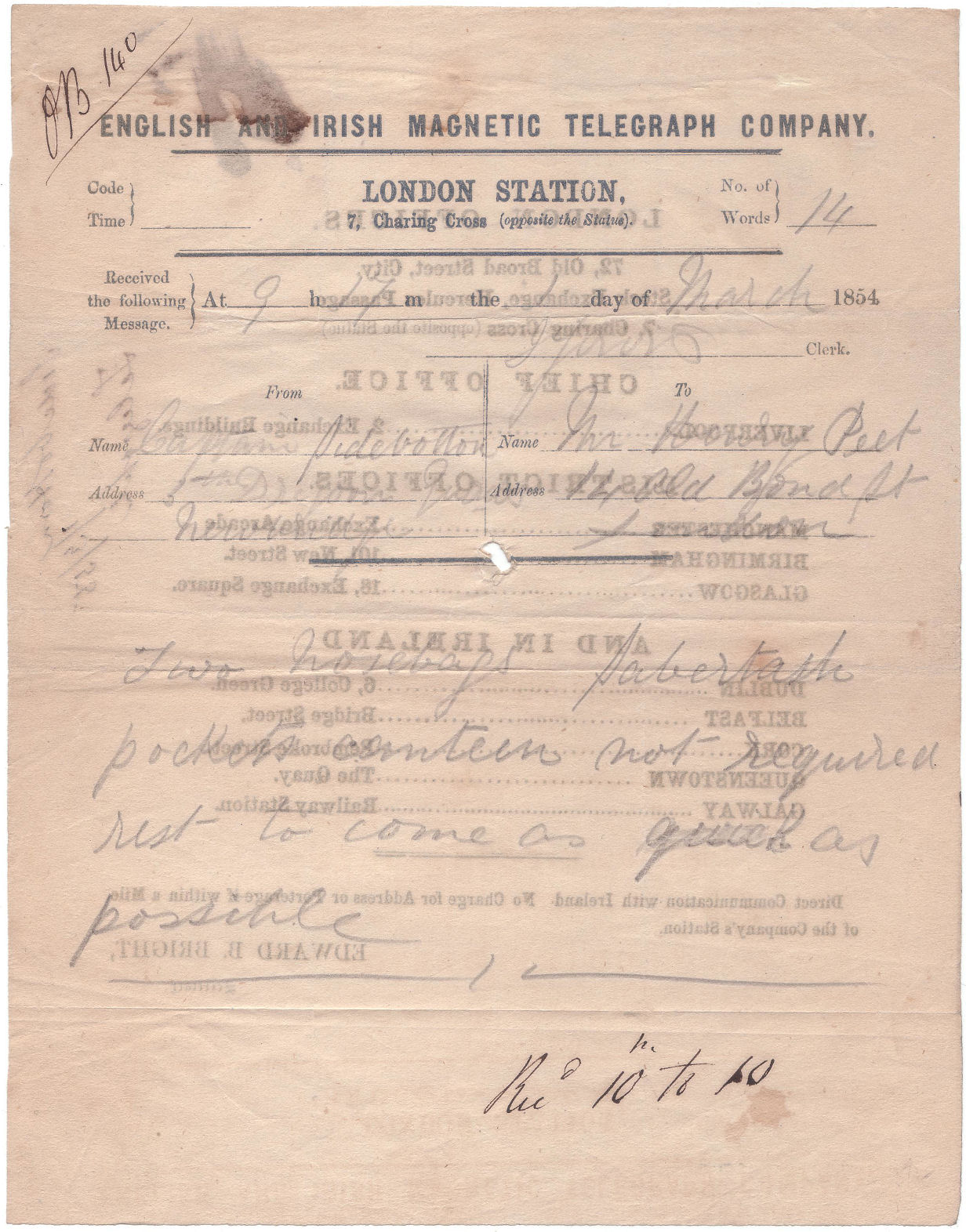
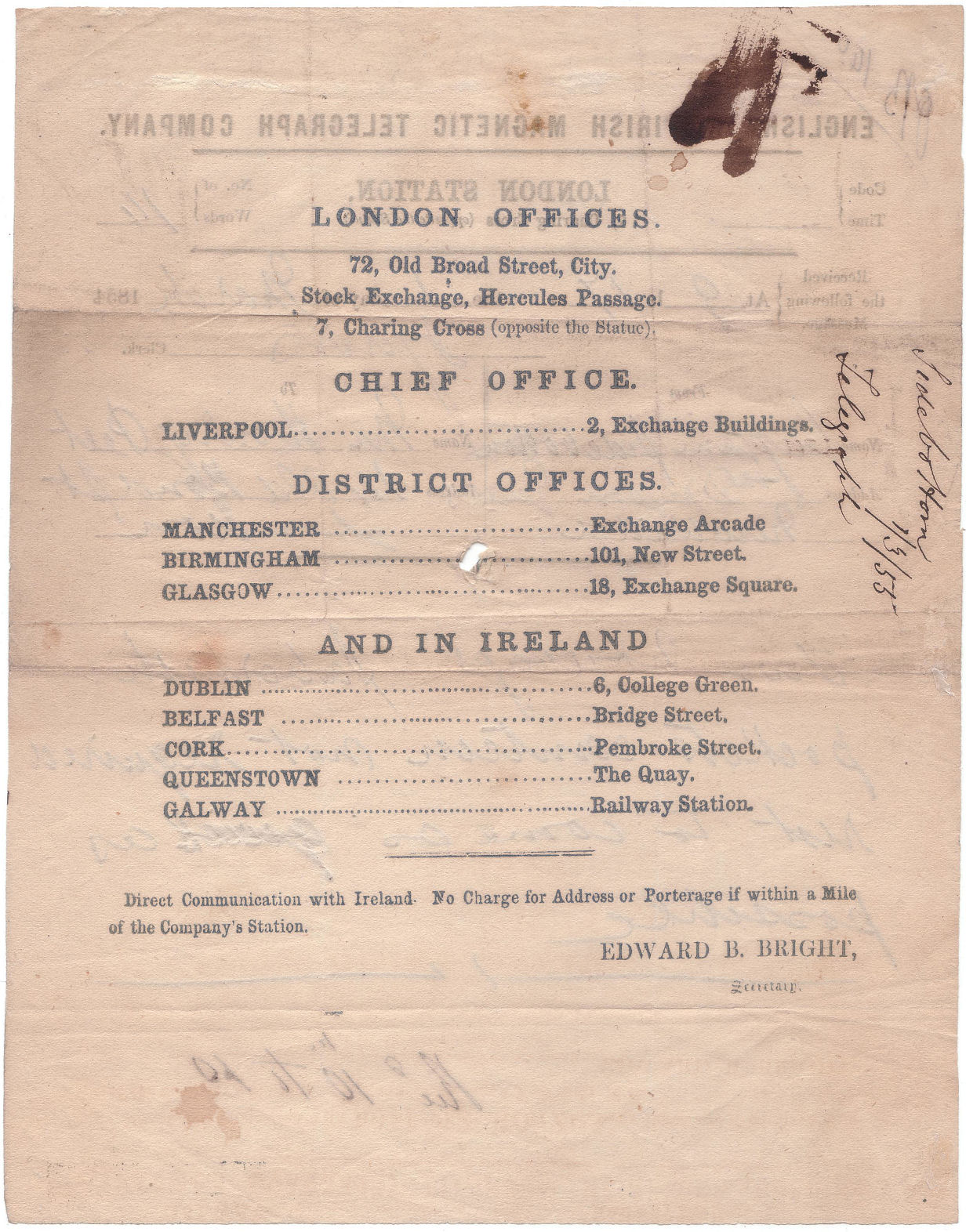
A delivery form of 1856 used on 9 October 1856, size 163 x 212 mm, courtesy of Edward Coombes. - My Ref. EIM-R-1856-1
The front of Form lists 6 London District Offices(32), with the message received at the London Stock Exchange from Liverpool.
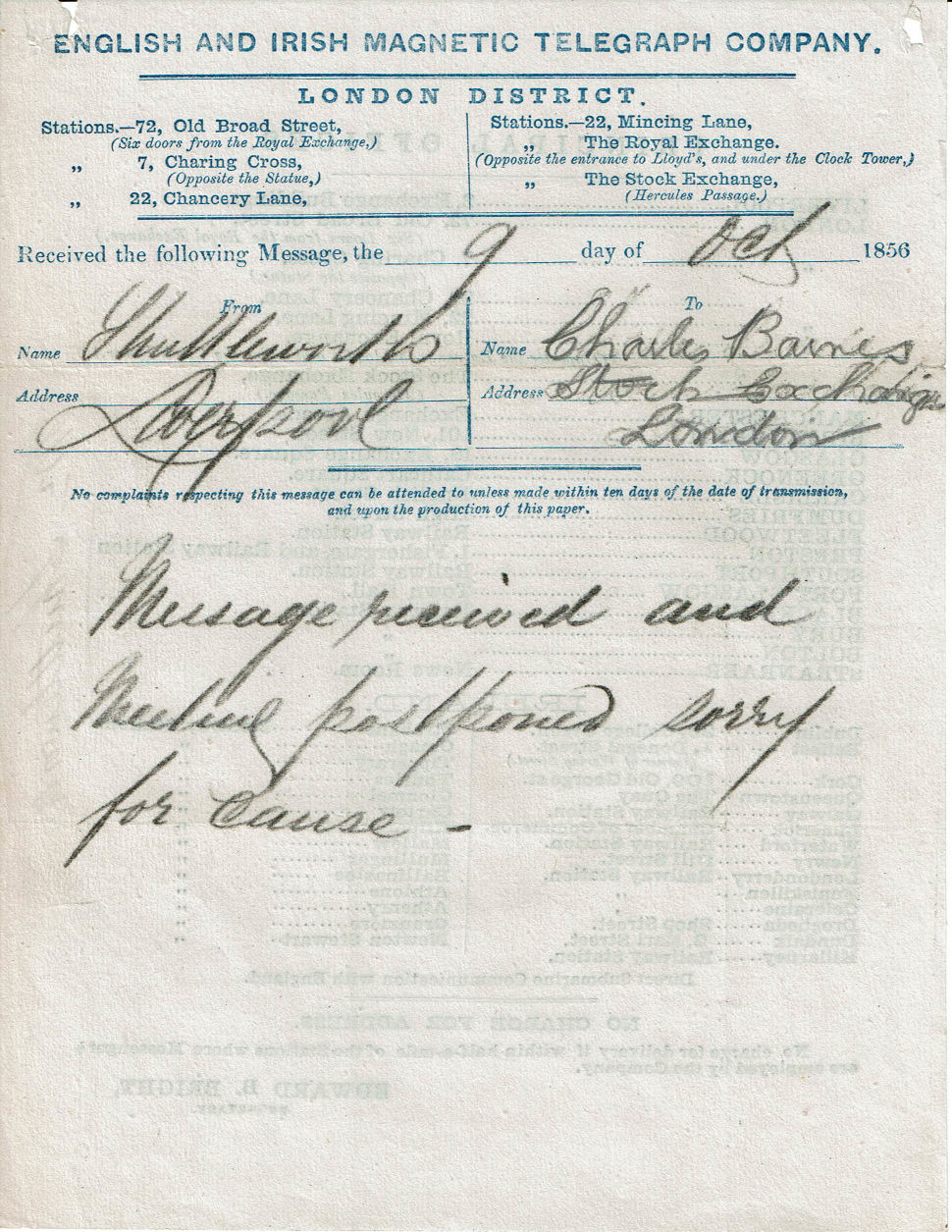
The back lists Principal Offices in 'England' and Ireland (28).
Considering the number of Scottish offices (5½), the name of the Company was perhaps a little inappropriate.
No charge for address, and no charge for delivery within half mile of office. Signature of Edward B. Bright (Secretary).
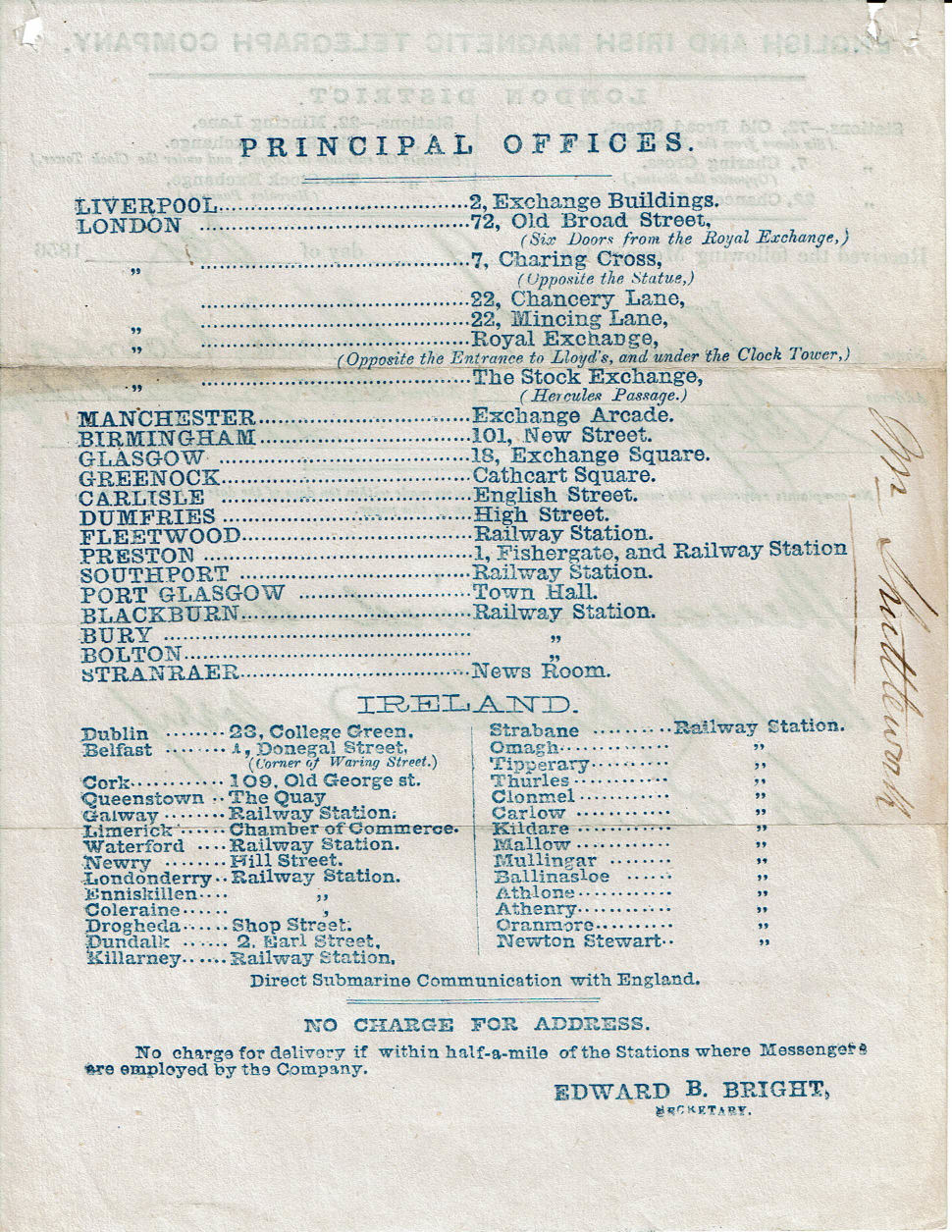
Delivery Form listing.
| Provisional Reference | L & H number | Date on form | Dates used | Size mm. | London Offices | Other UK Mainland | Irish | Authority | Illustrated |
|---|---|---|---|---|---|---|---|---|---|
| EIM-R-1853-1 | - | 185_ | 31/10/54 | 203 x 291 | - | - | - | - | Yes |
| EIM-R-1854-1 | - | 1854 | 1/3/55 | 172 x 220 | 3 | 4 | 5 | Edward B. Bright | Yes |
| EIM-R-1856-1 | - | 1856 | 9/10/56 | 163 x 212 | 6 | 15 | 28 | Edward B. Bright | Yes |
Receipt of 17 June 1857 - courtesy of Mark Gibson.
This is the one for 4/- at Cork.- My Ref. EIM-Rpt-1857-1
Last updated 12th. November 2023
©Copyright Steve Panting 2012/13/14/15/16/17/18/19/20/21/22/23 except where stated.
Permission is hereby granted to copy material for which the copyright is owned by myself, on condition that any data is not altered and this website is given credit.